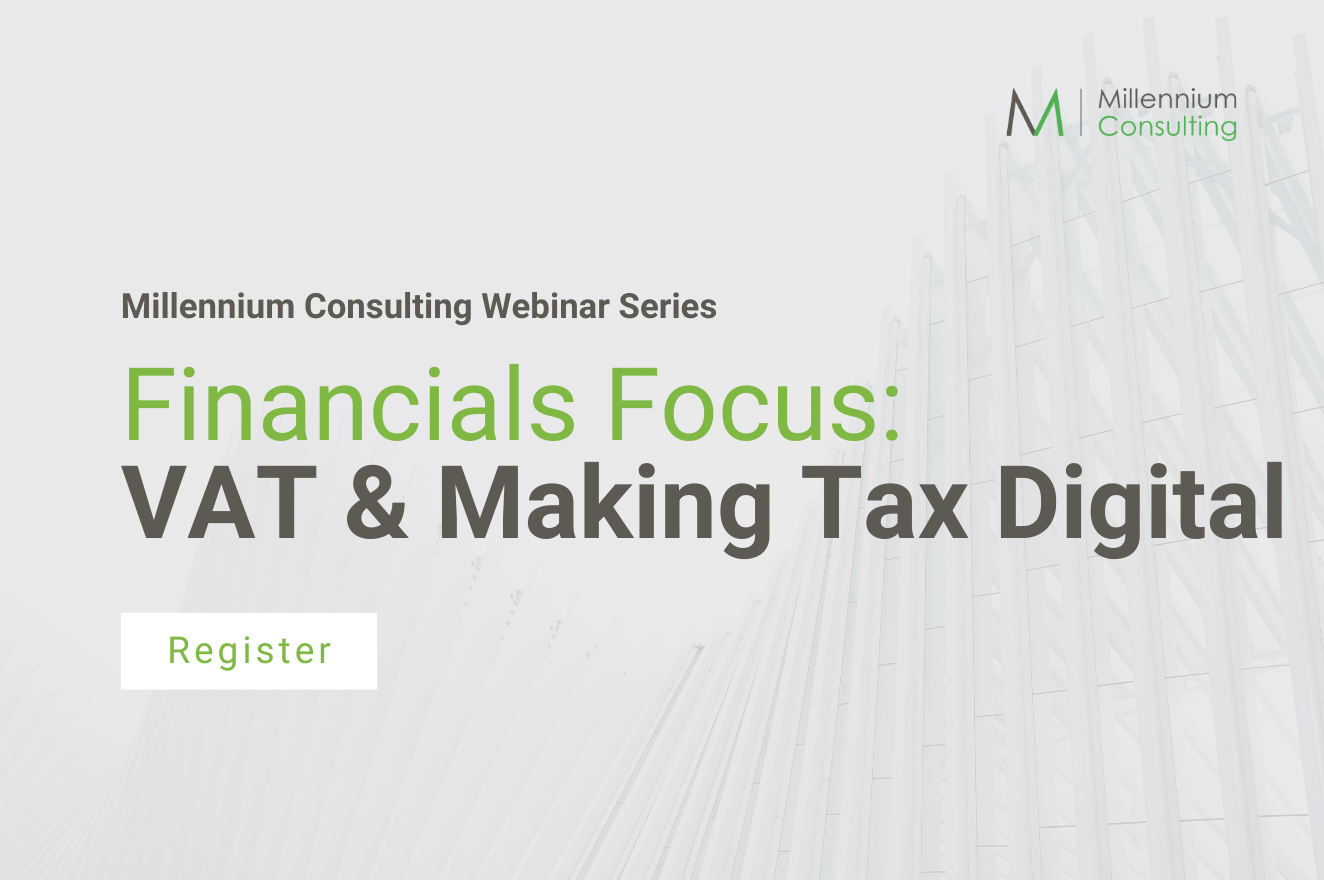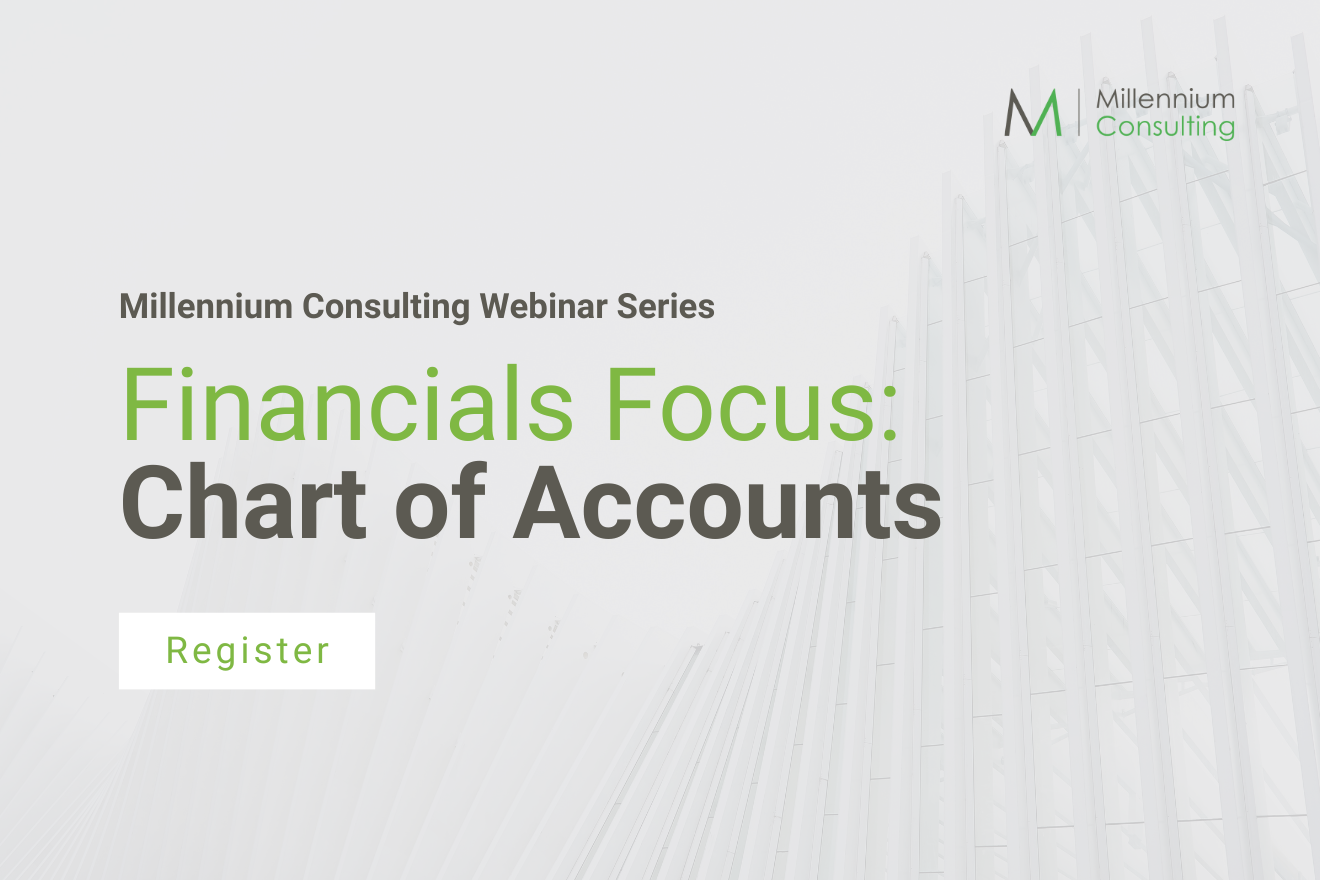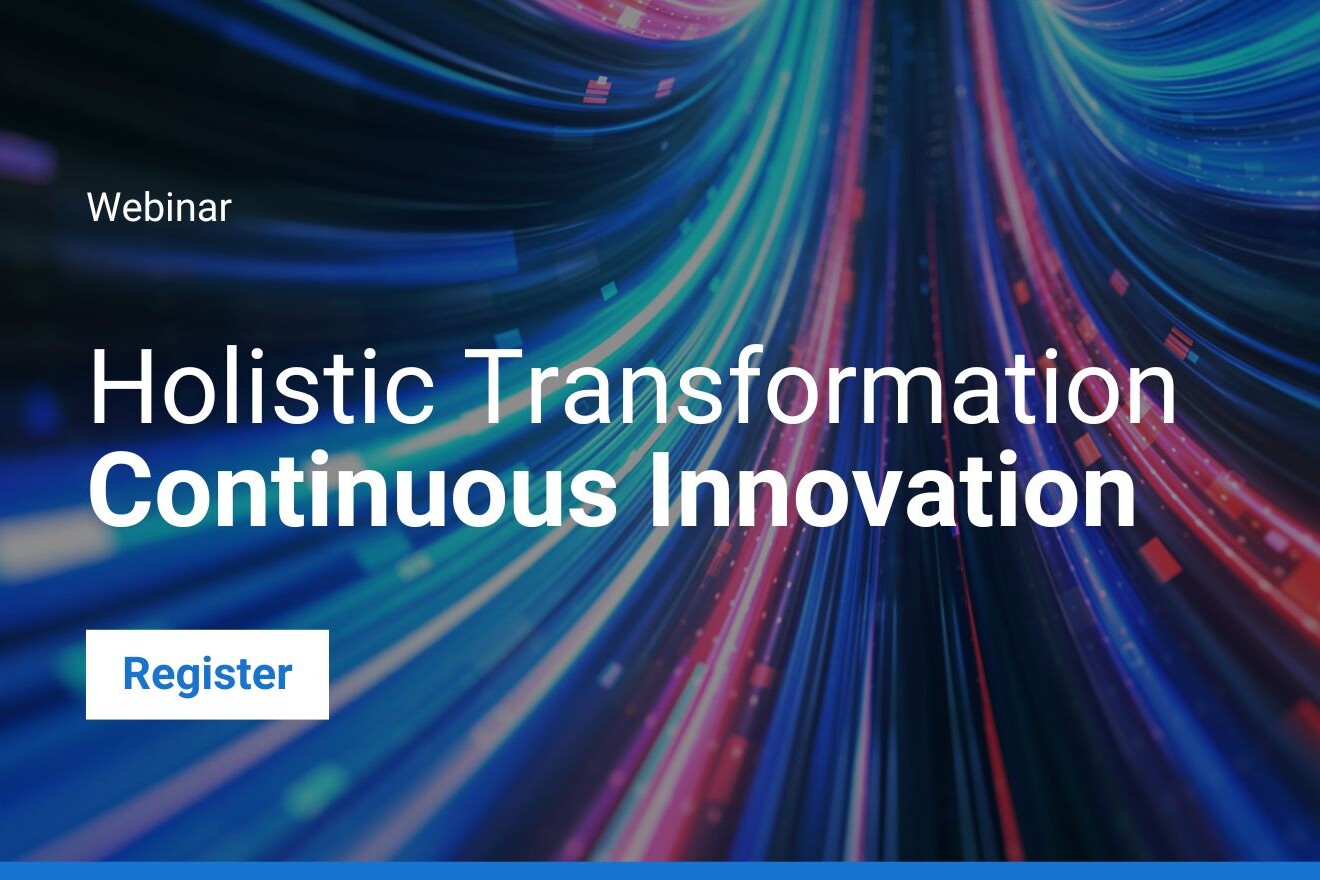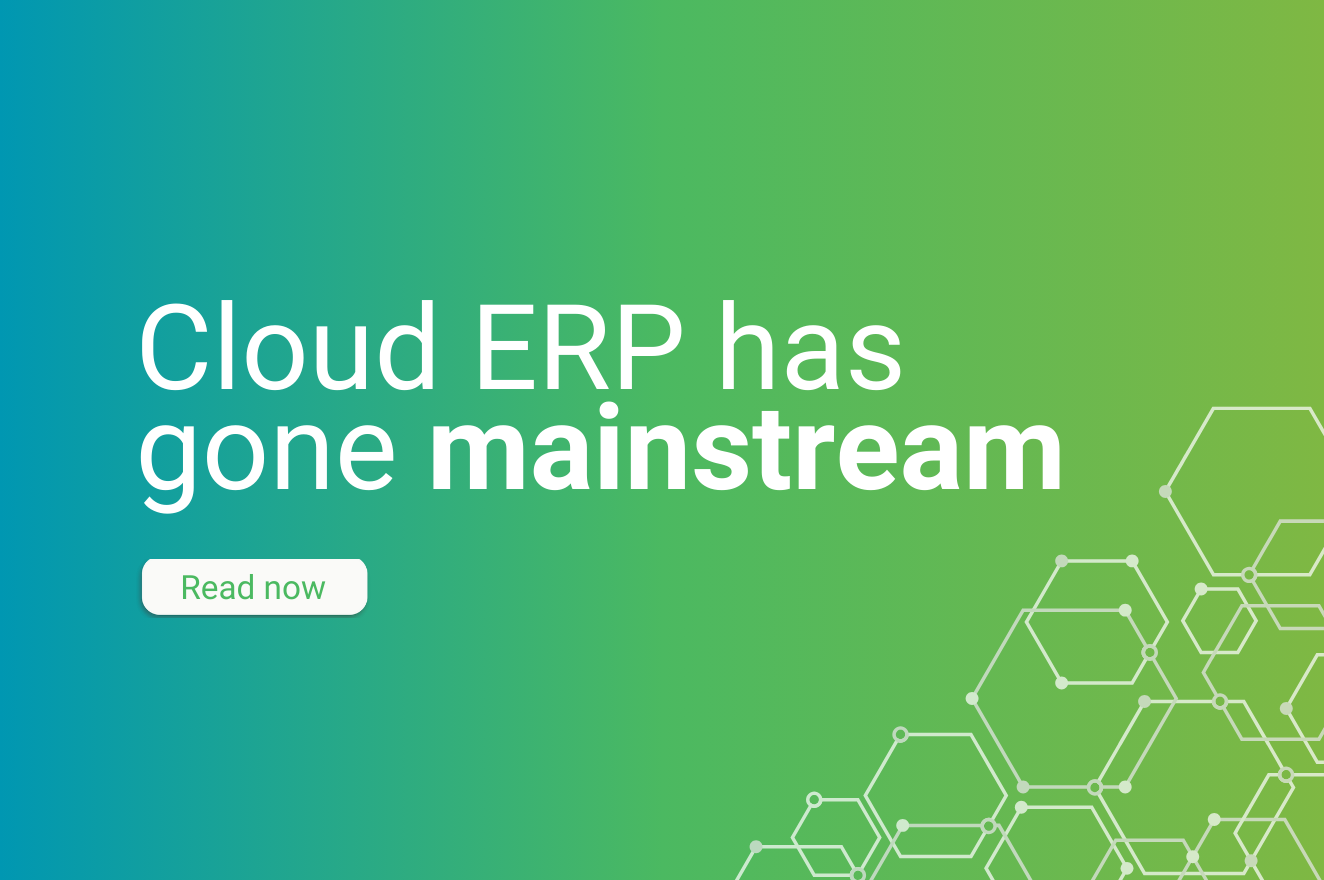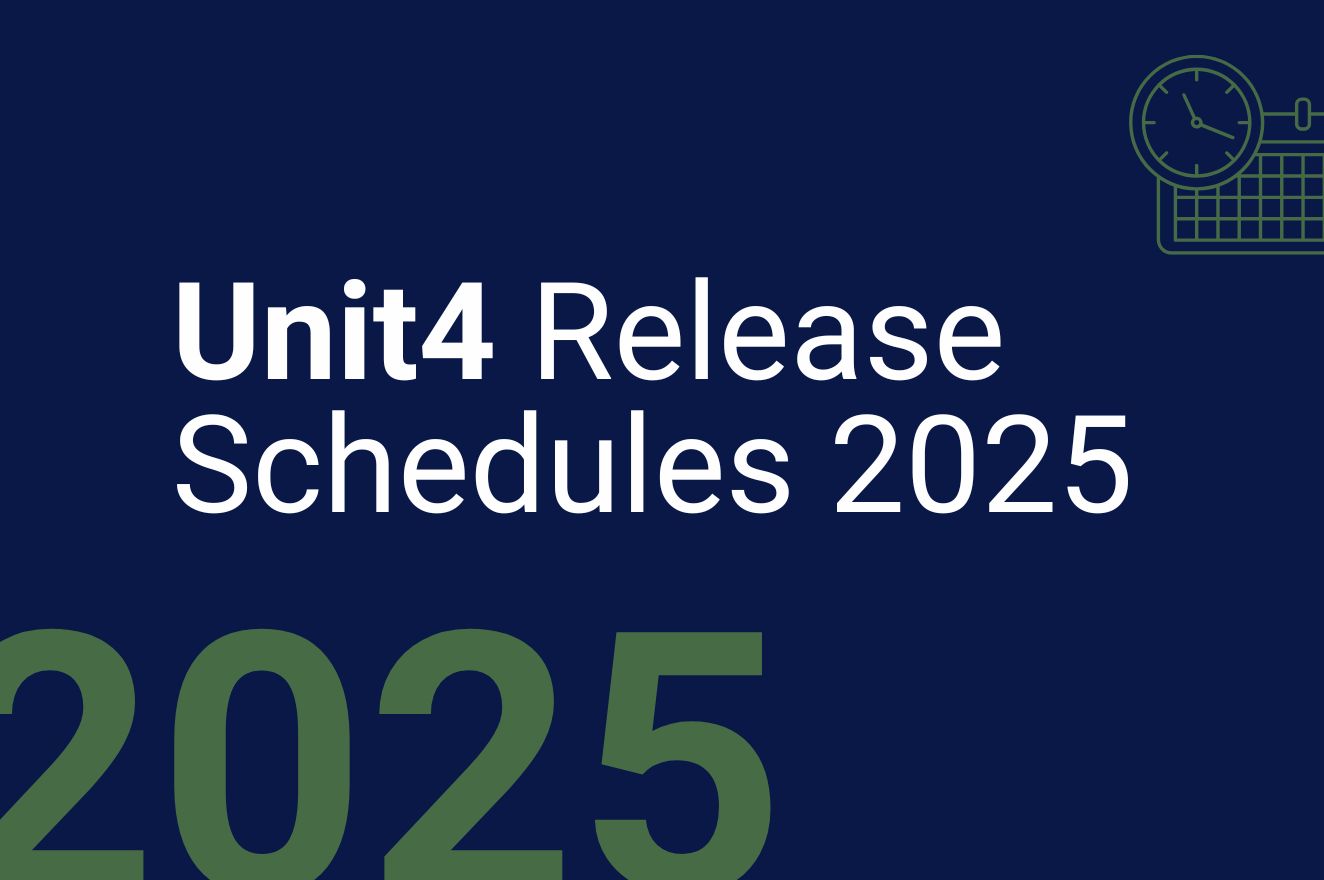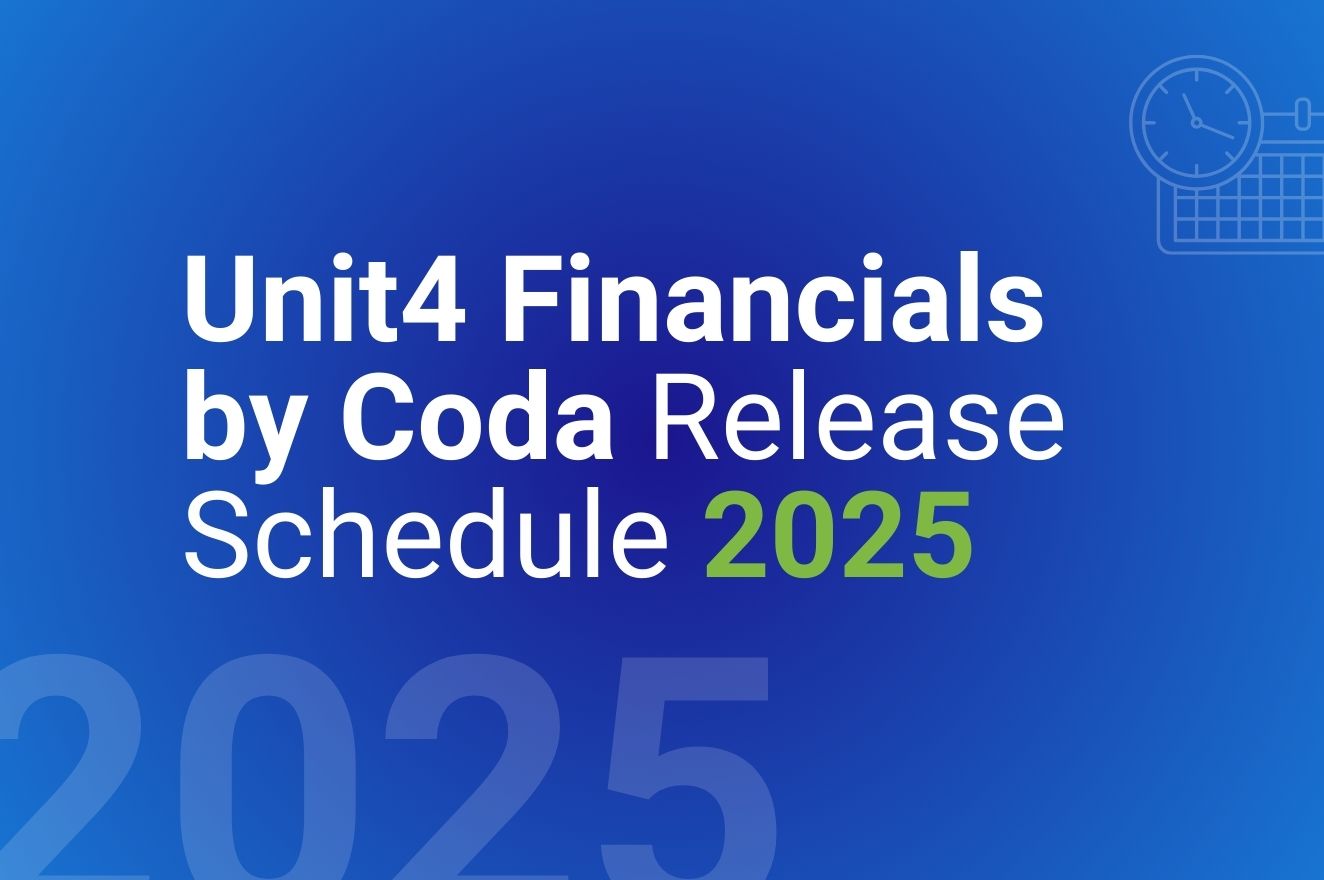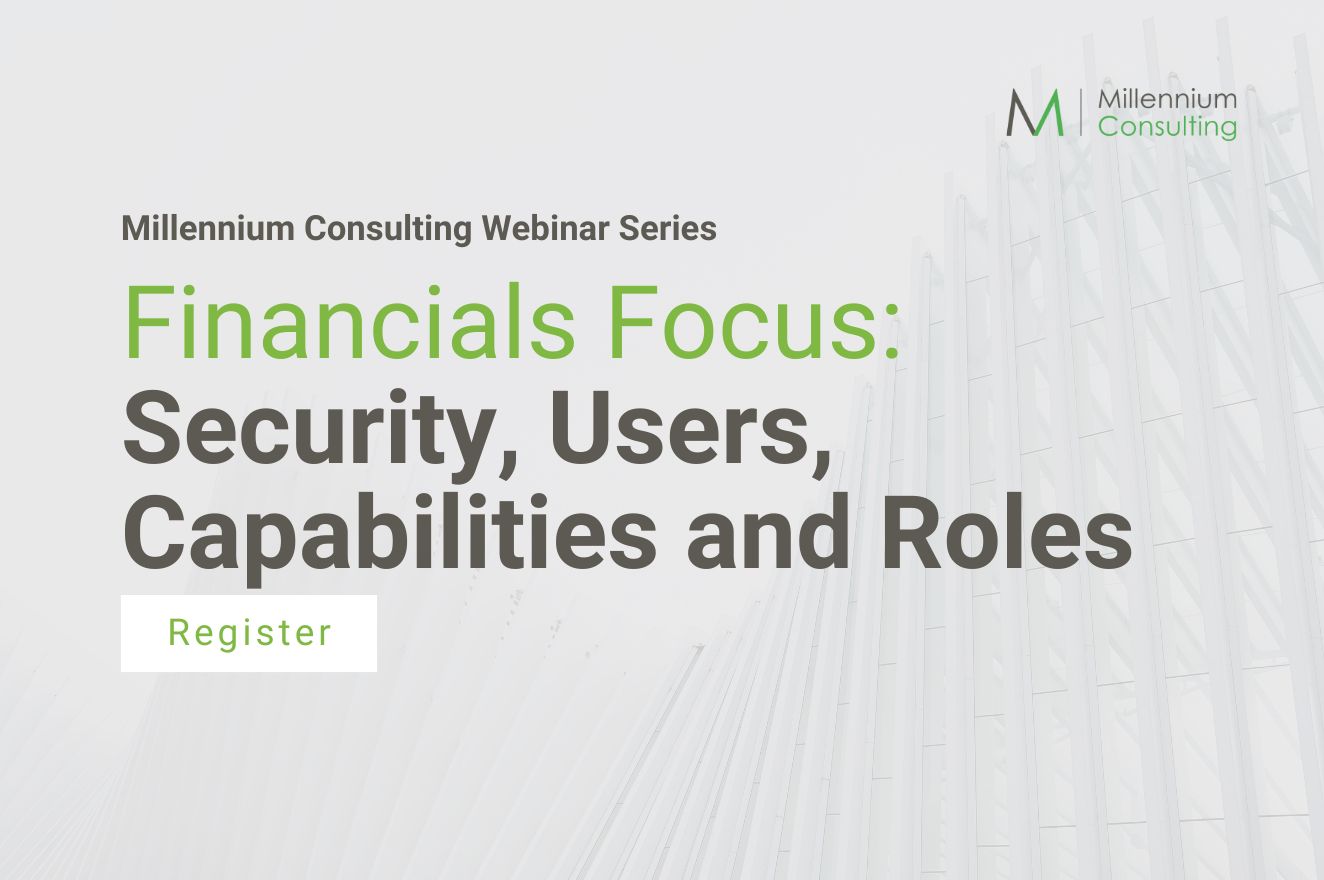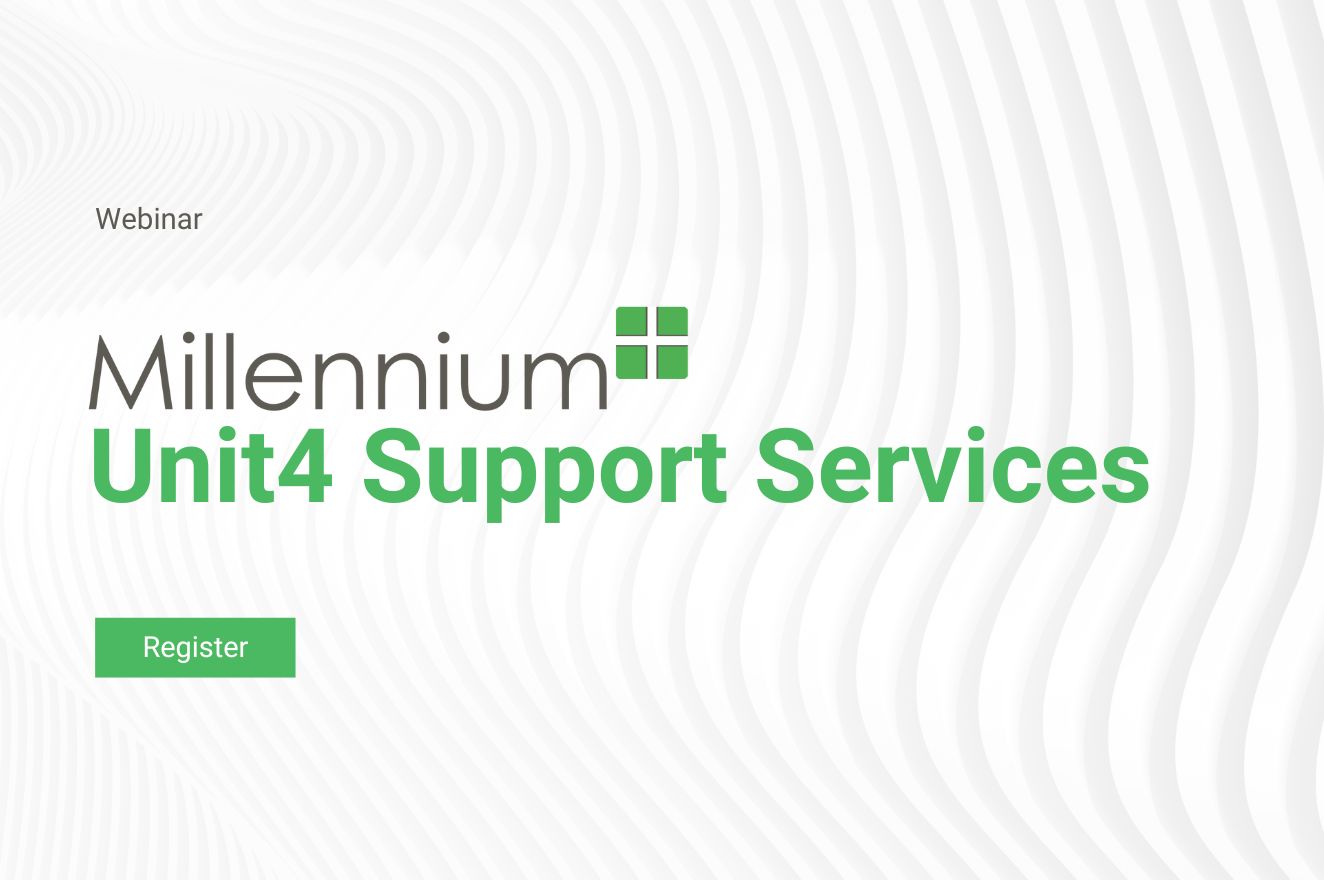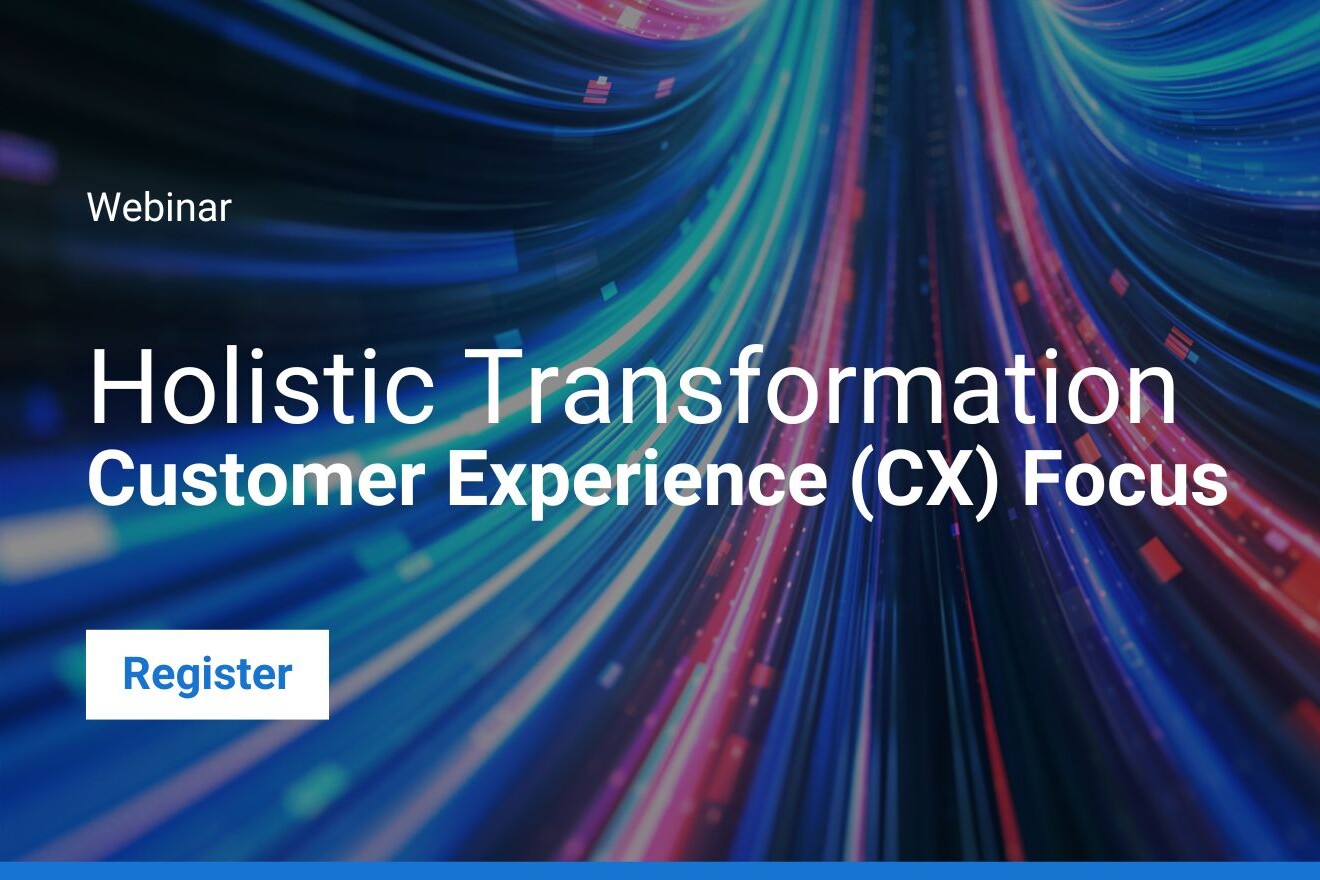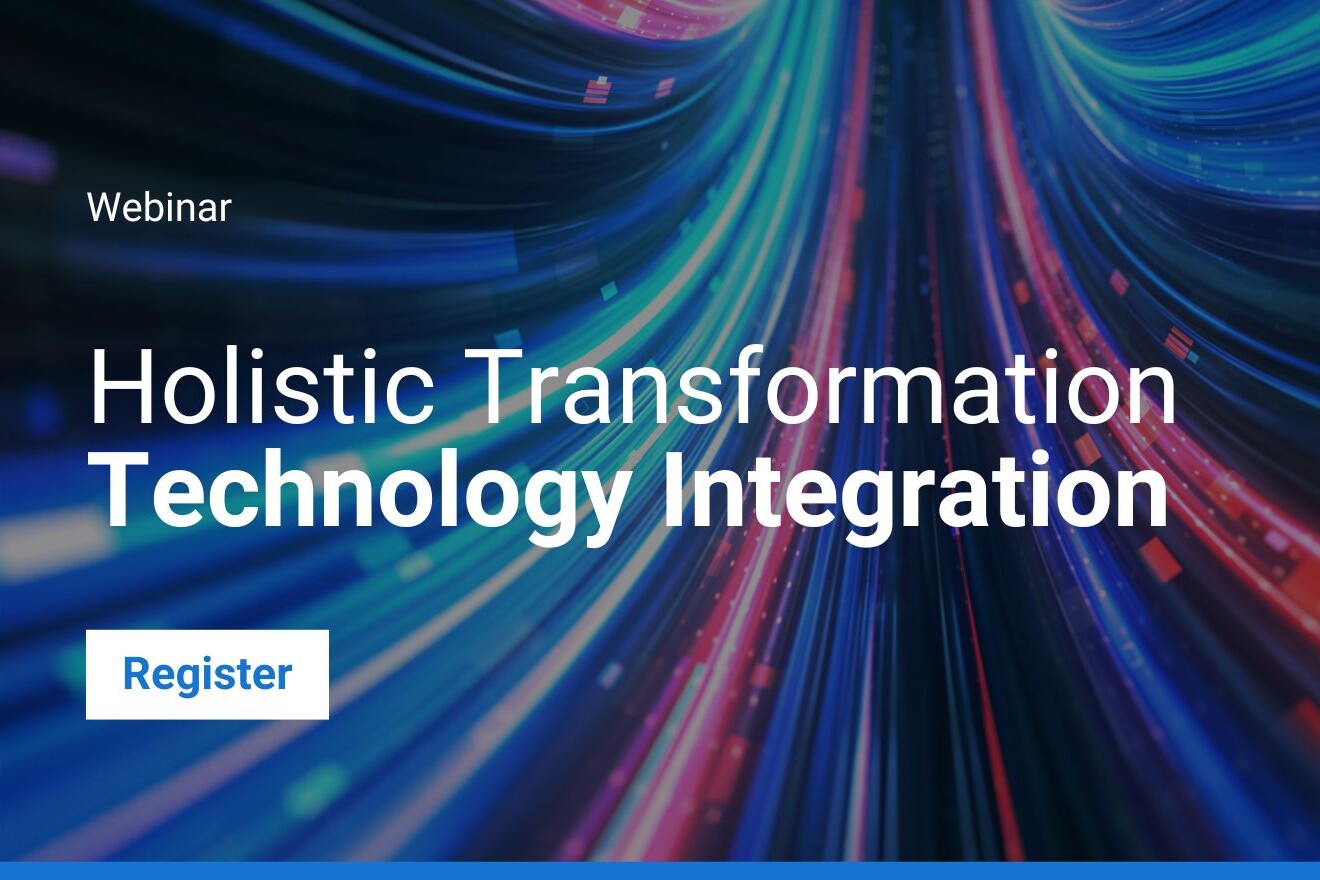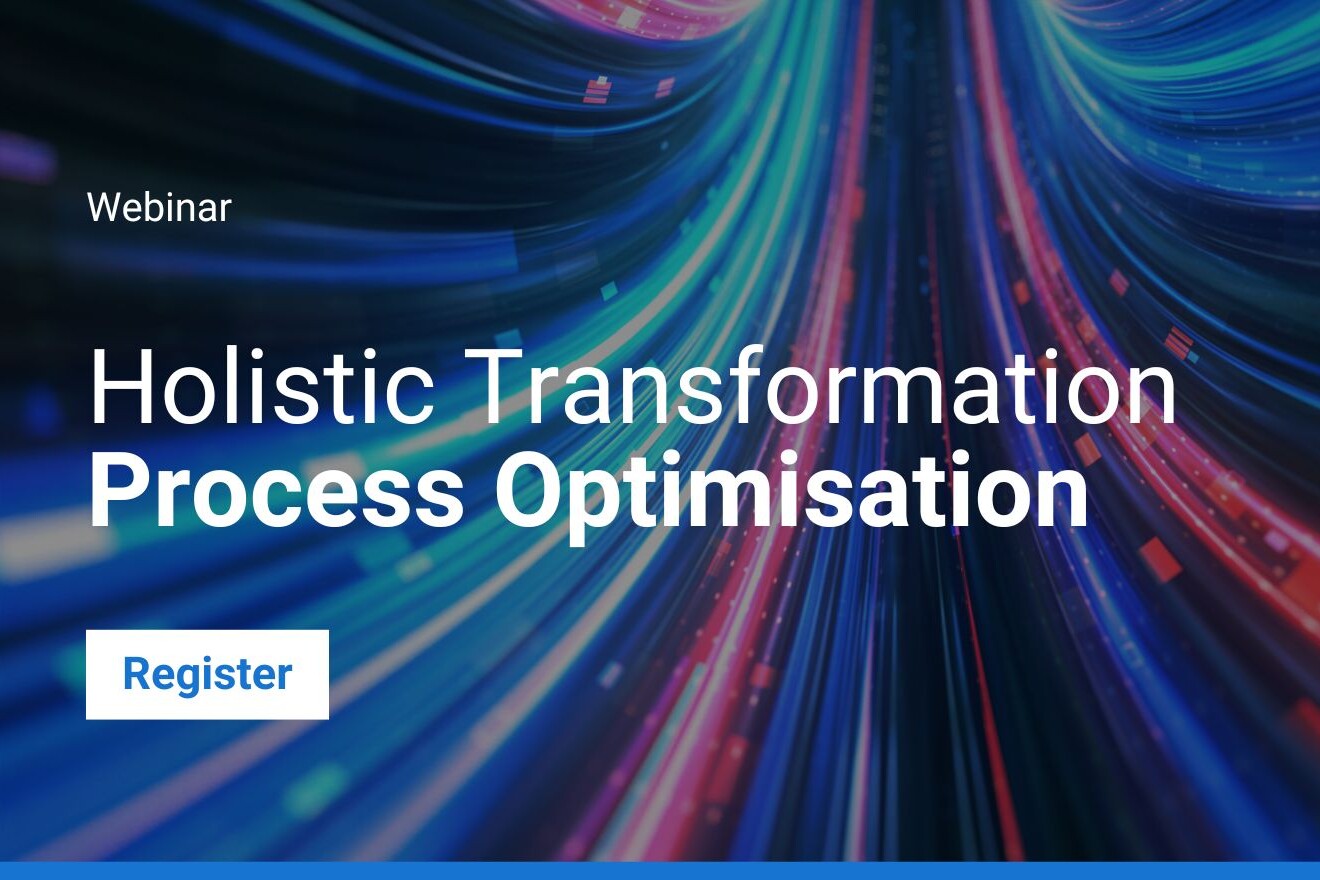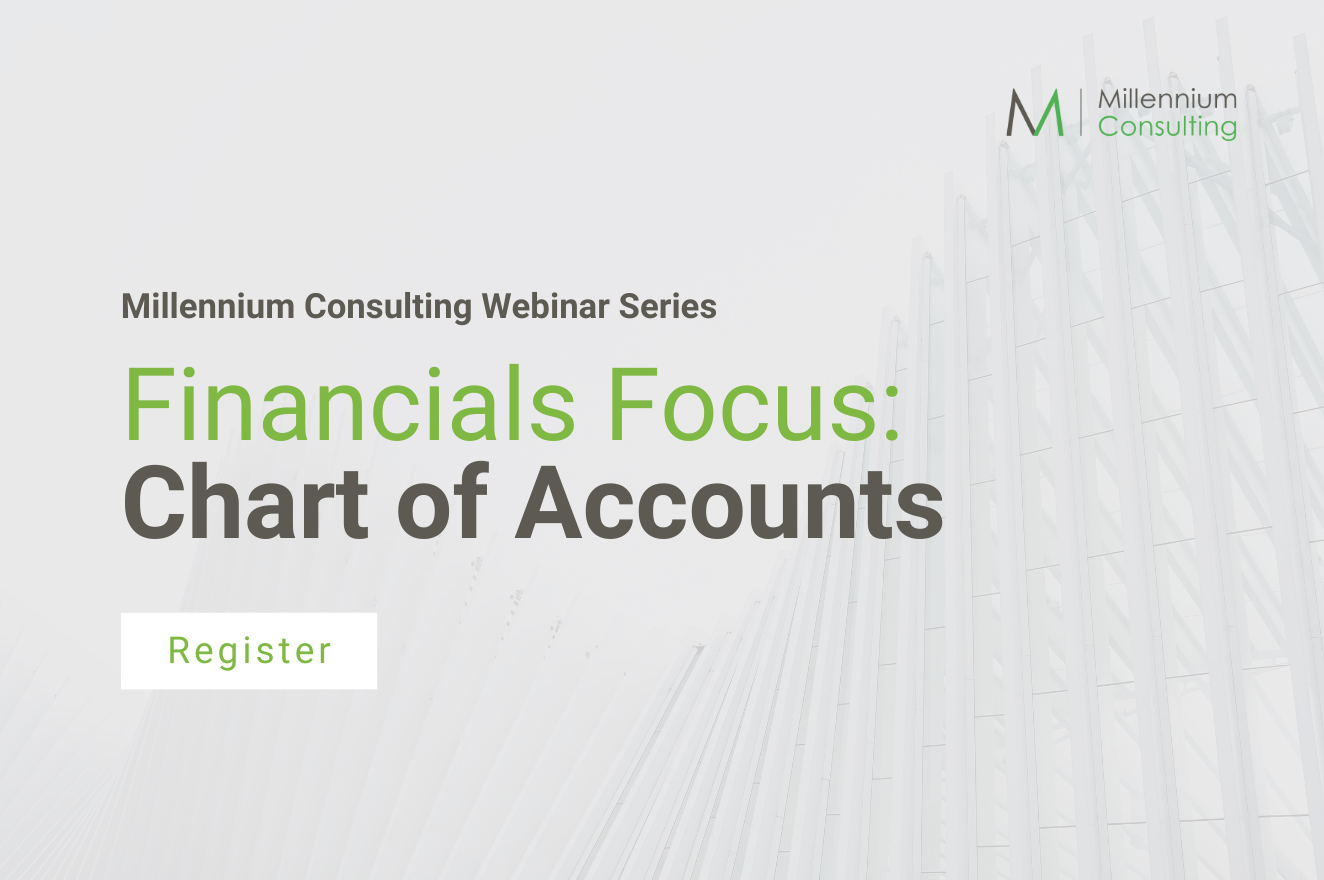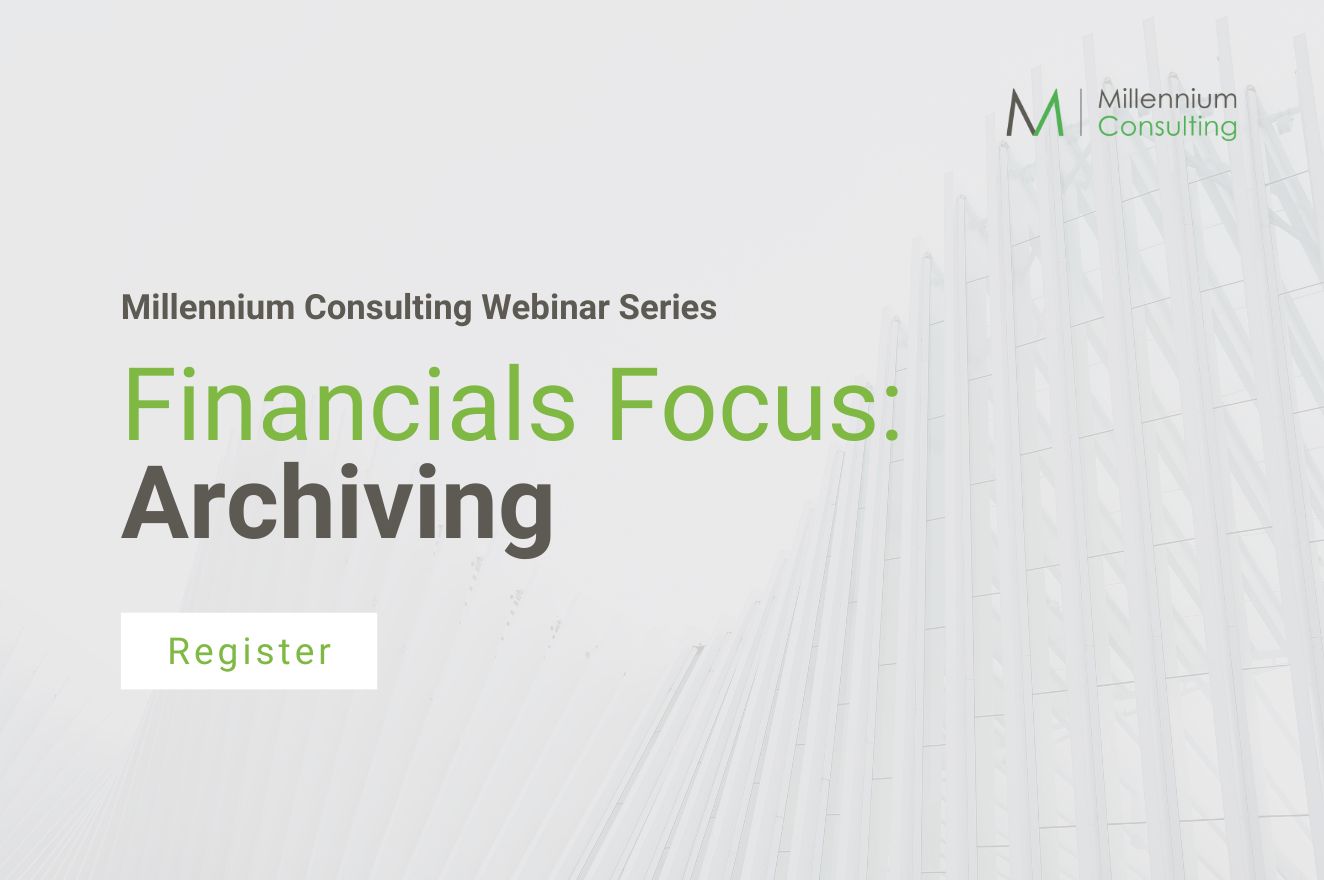Financials Focus: VAT & Making Tax Digital
Millennium Consulting Webinar Series
Financials Focus: VAT & Making Tax Digital
Thursday 6th November 2025 at 14.00 p.m. UK
Duration: 30 minutes
Join Millennium Consulting’s Webinar Series, Financials Focus event on VAT & Making Tax Digital in Unit4 Financials by Coda.
Thursday 6th November 2025 at 14.00 p.m. UK for 30 minutes
Discover how to optimise VAT processes and ensure compliance with Making Tax Digital (MTD) in Unit4 Financials by Coda. This session includes a live demonstration of MVAT, Millennium’s HMRC-recognised Making Tax Digital software. MVAT ensures compliance with mandatory MTD requirements and is seamlessly integrated into Unit4 Financials by Coda.
Agenda:
- Introduction to VAT accounting in Unit4 Financials by Coda
- Making Tax Digital
- Set up of MVAT
- Mapping Table
- MVAT Report
- Users
- Demo of MVAT
N.B. You will receive a link to the session after registering.
Presented by
Phil Leaf
Principal Unit4 Functional Consultant at Millennium Consulting
Phil is one of the world’s leading experts in the use of Unit4 Financials by Coda, with over 25 years of experience providing strategic advice, project management, implementation, and migration services for clients across the globe.

Ben Hart
Application and Information Security Consultant at Millennium Consulting
Ben is the Principal Information Security Consultant at Millennium Consulting, bringing a wealth of Cyber Security Auditing and Policy experience. Before joining Millennium, Ben spent 15 years in a high-risk and highly regulated industry.

Did you know...
We are an Elite Unit4 Partner
We are an Elite Unit4 partner and a leading reseller around the world. That means we have the knowledge and experience to design, implement and support the right Unit4 Financials solution for your business. We also make it easy to extend your system, providing additional applications that allow you to augment and tailor your solution to more closely meet your needs.
Cloud ERP has gone mainstream
Cloud ERP has gone mainstream
Cloud ERP (Enterprise Resource Planning) is now mainstream thanks to its ability to address modern business challenges by providing scalability, flexibility and cost-effectiveness.

Unlike traditional on-prem ERP systems, cloud ERP eliminates the need for substantial hardware and infrastructure investment and pay-as-you-go pricing makes ERP accessible to businesses of all sizes.
Cloud ERP can scale up or down based on business needs, accommodating growth or seasonal fluctuations and employees can access the platform from anywhere, enabling remote work and global collaboration. It can be deployed much faster than traditional solutions, which reduces time to value and ERP providers manage software upgrades, ensuring businesses always have access to the latest features and security enhancements.
Cloud ERP is designed to integrate easily with other cloud-based applications, providing a unified technology stack so that businesses benefit from real-time insights and analytics, enhancing decision-making capabilities. Cloud providers also invest heavily in cybersecurity, often providing more rigorous protection than on-premise systems and leading providers will also ensure adherence to global and industry-specific compliance standards.
The shift to hybrid and remote working models has accelerated the need for cloud ERP systems, which provide access from any device with an internet connection. Cloud ERP supports rapid changes in business operations, making it ideal for companies that operate in dynamic fast moving industries. Cloud ERP providers embed advanced technologies such as AI, ML and predictive analytics, enabling intelligent automation and improved processes. Seamless integration with IoT devices enhances real-time operational monitoring and decision-making.
Cloud-based systems reduce the need for energy-intensive on-premise data centres, aligning with environmental sustainability initiatives. The combination of cost efficiency, adaptability and technological advancement makes cloud an attractive choice for businesses aiming to remain competitive in a fast-paced, digital-first world.
Isn’t it time you considered migrating to the Cloud?
To explore how you can make the Cloud a reality, speak with Millennium Consulting and we can share with you the benefit of our experience working with many of the world’s leading organisations on their Cloud journeys.
Unit4 Release Schedules 2025
Unit4 Release Schedules 2025
Unit4 Financial Planning & Analysis Release Schedule 2025
Please find below the preliminary release schedule of FP&A 2025
| 2025 | Non-production (Preview & Acceptance) | Production |
| Q1 | 18th March | 26th/27th April |
| Q2 | 17th June | 19th/20th July |
| Q3 | 16th September | 25th/26th October |
| Q4 | 9th December | 24th/25th January |
- Data Centre: SaaS Azure
- Product: U4FPA
- Deployment option: Shared, Dedicated
- Environment types: Preview, Acceptance, Production
Please note that this is a preliminary schedule and is subject to change.
ERR CR Release Schedule 2025
Please find below the preliminary release schedule of ERP CR 2025
| 2025 | Preview | Acceptance | Production |
| Q1 | 24th March | 21st April | 25th/26th May |
| Q3 | 22nd September | 27th October | 22nd / 23rd November |
- Regions: Worldwide
- Products: ERP CR
- Data Centre: SaaS Azure
- Deployment option: Shared, Dedicated
- Environment types: Preview, Acceptance, Production
| 2025 | Non-production (Preview & Acceptance) | Production |
| Q1 | 24th March | 26th May |
| Q3 | 22nd September | 24th November |
- Regions: Nordics
- Products: ERP CR
- Data Centre: Nordics
- Deployment option: Public, Dedicated
- Environment types: Preview, Acceptance, Production
Please note that this is a preliminary schedule and is subject to change.
A detailed overview of the release scope and hourly schedule will be published after the official Release announcement on Community4U.
Unit4 Financials by Coda Continuous Release
Please find below the preliminary release schedule of Unit4 Financials by Coda 2025
| 2025 | Preview | Acceptance | Production |
| Q1 | 18th March | 25th March | 26th/27th April |
| Q2 | 17th June | 24th June | 19th/20th July |
| Q3 | 16th September | 23rd September | 25th/26th October |
| Q4 | 9th December | 16th December | 24th/25th January |
- Data Centre: SaaS Azure
- Product: U4F
- Deployment option: Shared, Dedicated
- Environment types: Preview, Acceptance, Production
Please note that this is a preliminary schedule and is subject to change.
Unit4 ERPx Release Schedule 2025
Please find below the preliminary release schedule of ERPx 2025
| 2025 | Non-production (Preview & Acceptance) | Production |
| Q1 | 17th March from 5.00 am to 5:00 pm UTC – United States/Australia/ Norway
18th March from 05.00 am to 5:00 pm UTC – Europe/United Kingdom/ Canada |
26th April from 5:00 pm to 27th April 05.00 am UTC – all regions |
| Q2 | 16th June from 05.00 am to 5:00 pm UTC – United States/ Australia/ Norway
17th June from 05:00 am to 5:00 pm UTC – Europe/United Kingdom/ Canada
|
19th July from 5.00 pm to 20th July 5.00 am UTC – all regions |
| Q3 | 15th September from 5.00 am to 5.00 pm UTC – United States/Australia/ Norway
16th September from 05:00 am to 5:00 pm UTC – Europe/United Kingdom/ Canada
|
18th October from 5.00 pm to 20th July 5.00 am UTC – all regions |
| Q4 | To be updated | To be updated |
Please note that this is a preliminary schedule and is subject to change.
Source-to-Contract Release Schedule 2025
Please find below the preliminary release schedule of Source-to-Contract 2025
| 2025 | Non-production (Preview) | Acceptance | Status |
| Q1 | 12th March | 16th March | Planned |
| Q2 | 11th June | 15th June | Planned |
| Q3 | 10th September | 14d September | Planned |
| Q4 | 3rd December | 7th December | Planned |
- Regions: EU, Australia, Singapore
- Products: Source-to-Contract
- Data Centre: Amazon Web Services and Google Cloud Platform
- Deployment option: Shared
- Environment types: Non-production (Preview) & Production
Please note that this is a preliminary schedule and is subject to change.
Why choose Millennium for Unit4?
As an Elite Unit4 Partner with over three decades of experience in Change Management, we bring expertise in designing, implementing, and supporting the right Unit4 solution for your business. Unlock the full potential of your Unit4 solution by partnering with Millennium – your trusted transformation partner.
Unit4 Financials by Coda Release Schedule 2025
Unit4 Financials by CodaRelease Schedule 2025
Unit4 Financials by Coda Continuous Release
Please find below the preliminary release schedule of Unit4 Financials by Coda 2025
| 2025 | Preview | Acceptance | Production |
| Q1 | 18th March | 25th March | 26th/27th April |
| Q2 | 17th June | 24th June | 19th/20th July |
| Q3 | 16th September | 23rd September | 25th/26th October |
| Q4 | 9th December | 16th December | 24th/25th January |
- Data Centre: SaaS Azure
- Product: U4F
- Deployment option: Shared, Dedicated
- Environment types: Preview, Acceptance, Production
Please note that this is a preliminary schedule and is subject to change.
Why choose Millennium for Unit4 Financials by Coda?
We are an Elite Unit4 Partner with more than three decades of experience working with Unit4 Financials by Coda. That means we have the knowledge and experience to design, implement and support the right Unit4 Financials solution for your business.
Financials Focus: Fixed Assets
Millennium Consulting Webinar Series
Financials Focus: Fixed Assets
Thursday 4th December 2025 at 14.00 p.m. UK
Duration: 30 minutes
Join Millennium Consulting’s Webinar Series, Financials Focus event on Fixed Assets in Unit4 Financials by Coda.
Thursday 4th December 2025 at 14.00 p.m. UK for 30 minutes
Agenda to follow.
N.B. You will receive a link to the session after registering.
Presented by
Phil Leaf
Principal Unit4 Functional Consultant at Millennium Consulting
Phil is one of the world’s leading experts in the use of Unit4 Financials by Coda, with over 25 years of experience providing strategic advice, project management, implementation, and migration services for clients across the globe.

Did you know...
We are an Elite Unit4 Partner
We are an Elite Unit4 partner and a leading reseller around the world. That means we have the knowledge and experience to design, implement and support the right Unit4 Financials solution for your business. We also make it easy to extend your system, providing additional applications that allow you to augment and tailor your solution to more closely meet your needs.
Financials Focus: Security, Users, Capabilities and Roles
Millennium Consulting Webinar Series
Financials Focus: Security, Users, Capabilities and Roles
Thursday 18th September 2025 at 14.00 p.m. UK
Duration: 30 minutes
Join Millennium Consulting’s Webinar Series, Financials Focus event on Security, Users, Capabilities and Roles in Unit4 Financials by Coda.
Thursday 18th September 2025 at 14.00 p.m. UK for 30 minutes
Agenda to follow.
N.B. You will receive a link to the session after registering.
Presented by
Phil Leaf
Principal Unit4 Functional Consultant at Millennium Consulting
Phil is one of the world’s leading experts in the use of Unit4 Financials by Coda, with over 25 years of experience providing strategic advice, project management, implementation, and migration services for clients across the globe.

Did you know...
We are an Elite Unit4 Partner
We are an Elite Unit4 partner and a leading reseller around the world. That means we have the knowledge and experience to design, implement and support the right Unit4 Financials solution for your business. We also make it easy to extend your system, providing additional applications that allow you to augment and tailor your solution to more closely meet your needs.
Millennium+ Webinar

Unlock the full potential of your Unit4 Ecosystem
Tuesday 21st October 2025 at 14.00 p.m. UK
Duration: 30 minutes
Maximise the potential of your Unit4 ecosystem with Millennium+. Whether you use Unit4 Financials by Coda, ERP, or any other Unit4 product, our tailored service packages ensure you receive the support and enhancements your business requires.
Join our exclusive webinar to learn:
- What Millennium+ provides: A comprehensive overview of our support and enhancement services.
- How Millennium+ helps maximise ROI: Explore how our solutions drive efficiency, reduce costs, and improve system utilisation.
- Why Millennium+ is suitable for everyone: Scalable packages designed to meet the needs of businesses of all sizes and industries.
- Transparent cost base with loyalty rewards: Understand our clear pricing structure and how our approach rewards long-term partnerships.
Who should attend?
This session is ideal for Unit4 users, decision-makers, and anyone seeking to optimise their software investment.
Tuesday 21st October 2025 at 14.00 p.m. UK for 30 minutes
Chris Peall
Director of Professional Services at Millennium Consulting
Chris Peall oversees all projects & services and is the Product Owner of all Millennium IP.
Chris has over 20 years working across the industry in the Data Science, Business Analytics, Architecture and Project Management spaces. He ensures that you will have access to the most relevant and experienced members of the team to suit your needs, and that results are delivered in an expedient and professional manner.


Unit4 Support Services
Support, maintain, enhance and enrich your ecosystem with Millennium+
Financials Focus: Billing in Coda
Millennium Consulting Webinar Series
Financials Focus: Billing in Coda
Thursday 1st May 2025 at 14.00 p.m. UK
Duration: 30 minutes
Join Millennium Consulting’s Webinar Series, Financials Focus event on Billing in Coda.
Thursday 1st May 2025 at 14.00 p.m. UK for 30 minutes
If your Unit4 Financials by Coda system is already in the Cloud or you plan to move soon, this session is essential.
Billing is a relatively new module, and the good news is that Billing licences are included as part of the Core product—at no extra cost. This means you already have access to a powerful invoicing solution or will get it when you move to the Cloud.
Billing offers a far superior invoicing process compared to the Financials module’s “Print Invoice” function. It provides enhanced flexibility, automation, and seamless integration with third-party CRM and SOP systems. This is your chance to see firsthand how Billing works and how it can transform your invoicing process.
Agenda
- What is Billing?
- Advantages of Billing Module versus Financials Module ‘Print Invoice’
- Flexifields in Billing
- Print Formatter, Flexifields and Issuing of Invoices
- Billing Licencing in the Cloud
- Demonstration
N.B. You will receive a link to the session after registering.
Presented by
Phil Leaf
Principal Unit4 Functional Consultant at Millennium Consulting
Phil is one of the world’s leading experts in the use of Unit4 Financials by Coda, with over 25 years of experience providing strategic advice, project management, implementation, and migration services for clients across the globe.

Did you know...
We are an Elite Unit4 Partner
We are an Elite Unit4 partner and a leading reseller around the world. That means we have the knowledge and experience to design, implement and support the right Unit4 Financials solution for your business. We also make it easy to extend your system, providing additional applications that allow you to augment and tailor your solution to more closely meet your needs.
Financials Focus: Chart of Accounts
Millennium Consulting Webinar Series
Financials Focus: Chart of Accounts
Thursday 3rd April 2025 at 14.00 p.m. UK
Duration: 30 minutes
Join Millennium Consulting’s Webinar Series, Financials Focus event on Chart of Accounts in Unit4 Financials by Coda.
Are you able to generate the information your business needs directly from Unit4 Financials, without resorting to end user computing? If not, then your Chart of Accounts may benefit from being reviewed to ensure it is still fit for purpose.
This webinar will demonstrate how an optimally configured Chart of Accounts design can enable you to generate the information you need directly from Unit4 Financials. We will also share some FAQ’s such as:
- Can you have different Charts of Accounts for different companies?
- Is there a way to download a Chart of Accounts with numbers and descriptions?
Presented by Millennium’s Principal Unit4 Functional Consultant, Phil Leaf.
Thursday 3rd April 2025 at 14.00 p.m. UK for 30 minutes
Phil Leaf
Principal Unit4 Functional Consultant at Millennium Consulting
Phil is one of the world’s leading experts in the use of Unit4 Financials, with over 25 years of experience providing strategic advice, project management, implementation, and migration services for clients across the globe.

Did you know...
We are an Elite Unit4 Partner
We are an Elite Unit4 partner and a leading reseller around the world. That means we have the knowledge and experience to design, implement and support the right Unit4 Financials solution for your business. We also make it easy to extend your system, providing additional applications that allow you to augment and tailor your solution to more closely meet your needs.
Financials Focus: Archiving
Millennium Consulting Webinar Series
Financials Focus: Archiving
Thursday 12th June 2025 at 14.00 p.m. UK
Duration: 30 minutes
Join Millennium Consulting’s Webinar Series, Financials Focus event on Archiving in Unit4 Financials by Coda.
Do you regularly run the archiving function in Unit4 Financials? Have you noticed slower response times for queries, searches, browses, or transactional reports?
This could be due to users sifting through millions of irrelevant data entries that should have been archived.
Join us for this insightful session, where we’ll cover:
- How archiving works in Unit4 Financials by Coda
- The different types of archiving available
- Best practices for effective archiving
Regular archiving is essential for any accounting or financial management solution. It helps control dataset size, improve processing speeds, and optimise system performance.
Register today to learn how to archive your Unit4 Financials data efficiently!
Thursday 12th June 2025 at 14.00 p.m. UK for 30 minutes
Phil Leaf
Systems Architect/Principal Consultant at Millennium Consulting
Phil is one of the world’s leading experts in the use of Unit4 Financials, with over 25 years of experience providing strategic advice, project management, implementation, and migration services for clients across the globe.

Did you know...
We are an Elite Unit4 Partner
We are an Elite Unit4 partner and a leading reseller around the world. That means we have the knowledge and experience to design, implement and support the right Unit4 Financials solution for your business. We also make it easy to extend your system, providing additional applications that allow you to augment and tailor your solution to more closely meet your needs.

